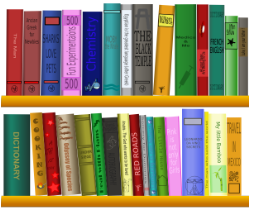Written By: Ally Taynton, Staff Writer
CENSOR: The process to ban a book is really simple, and people take advantage of this to push their agendas, dubiously balancing on the line of violating the First Amendment.
Many books around the world are banned because of coarse language, religious messaging, or for content that could be inappropriate for certain age groups. However, some books that are banned in one school could be required reading somewhere else. So you may be wondering how this process actually works. If a book is banned, then why isn’t it banned everywhere? If a school, state, or country thinks that a book should be banned, they challenge it. If they want to challenge a book, they need to go through a process to get a hearing. Then it is decided what kind of ban will be established. Books still deserve a chance to be read. It should never be the case that a singular complaint from a vocal group limits people’s access to information protected by the First Amendment.

Mrs. Goodwin, Poly’s librarian who has worked at Poly for 6 years, has never had to go through a book ban process. If a complaint is made it is sent “directly to the principal” and then the principal presents the complaint to the superintendent. The superintendent is the person who makes the decision as to whether or not a book should be banned. Mrs. Goodwin believes that no book should ever be banned. However, books may go against people’s personal opinions and contain ideas that they disagree with. In the end, it is up to the superintendent of the school district to make the decision. In school districts a parent could bring up concerns about a book; the school district will then do a reconsideration to re-evaluate the quality of that book. That is why some districts have banned books and others do not. For example at Poly, there are no banned books, but other schools around the US have banned books that we are required to read.

Lord of the Flies, written by William Golding, is a required book in RUSD. However, it has been challenged in other districts. In RUSD, it is one of the books that all students will read in their Literature classes, but other people don’t think that it should be offered in schools at all. It all depends on the superintendent of that district. There is a big list of banned books that keeps growing every year, yet the list of successful challenges initiated by parents is very small.
The process to ban a book is quite simple, yet many parent initiated complaints never make it to the superintendent. Many parents don’t meet the requirements to correctly ban a book. The person who initiates the challenge must read the whole book and annotate specifically where in the book there was something offensive. If the challenge form is never filled out, no movement will be made. Therefore, book bans are not that common. Even if someone found something offensive, not everybody would feel the same. Book bans should be done with caution. Unless the material is dangerous to the safety of others, it is a fine line to tread. The freedom of speech and expression are unalienable rights, and book banning seeks to limit what people can read.
